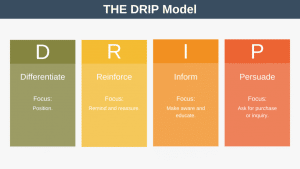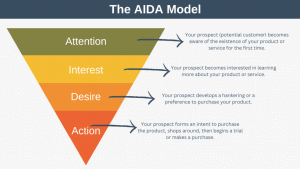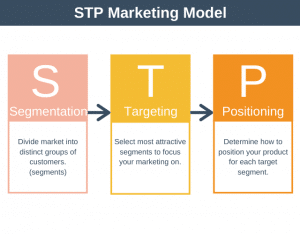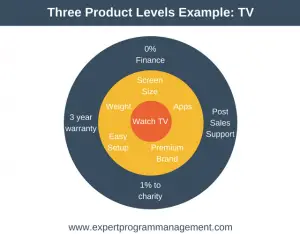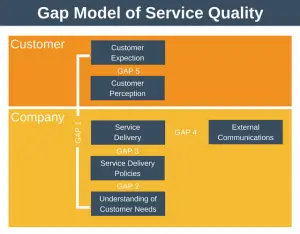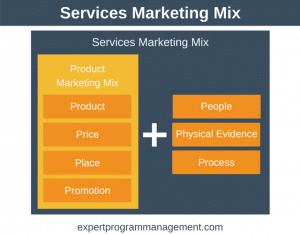The Five Product Levels model provides a way to show the different levels of need customers have for a product. These needs range from core needs to psychological needs. At each product level, more customer value is added.
History
The Five Product Levels model was developed by Philip Kotler in the 1960s. Kotler’s book, Marketing Management (15th Edition), was voted one of the 50 best business books of all time in the mid-1990s by the Financial Times.
Before Kotler, marketing existed within a silo, the marketing department. Kotler was instrumental in making marketing an organization-wide activity.
What is a Product?
For Kotler, the definition of a product goes way beyond being a physical object or a service. He defines a product as anything that can meet a need or a want. This means that even a retail store or a customer service representative is considered a product.
The model considers that products are a means to an end to meet the various needs of customers. The model is based on there being three ways in which customers attach value to a product:
- Customer Need: the lack of a basic requirement.
- Customer Want: a specific requirement for a product or service to meet a need.
- Customer Demand: a set of wants plus the desire and ability to pay to have them satisfied.
Customers will choose a product based on their perceived value of it. The customer is satisfied if the product’s actual value meets or exceeds their expectations. If the product’s actual value falls below their expectations they will be dissatisfied.
What are the Five Product Levels?
The Five Product Levels are given in the diagram below:
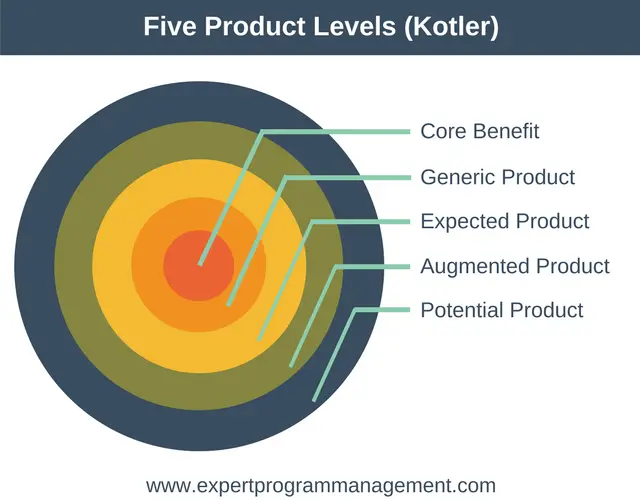
Let’s consider each of the levels in turn.
1. Core Benefit
The core benefit is the fundamental need or wants that the customer satisfies when they buy the product.
For example, the core benefit of a hotel is to provide somewhere to rest or sleep when away from home.
2. Generic Product
The generic product is a basic version of the product made up of only those features necessary for it to function.
In our hotel example, this could mean a bed, towels, a bathroom, a mirror, and a wardrobe.
3. Expected Product
The expected product is the set of features that the customers expect when they buy the product.
In our hotel example, this would include clean sheets, some clean towels, Wi-fi, and a clean bathroom.
4. Augmented Product
The augmented product refers to any product variations, extra features, or services that help differentiate the product from its competitors.
In our hotel example, this could be the inclusion of a concierge service or a free map of the town in every room.
5. Potential Product
The potential product includes all augmentations and transformations the product might undergo in the future. In simple language, this means that to continue to surprise and delight customers the product must be augmented.
In our hotel, this could mean a different gift placed in the room each time a customer stays. For example, it could be some chocolates on one occasion, and some luxury water on another. By continuing to augment its product in this way the hotel will continue to delight and surprise the customer.
Five Product Levels Example: Coca-Cola
It can be easy to see how the Five Product Levels apply to the hotel industry, but what about a company like Coca-Cola?
Let’s examine what each level might be for this company:
1. Core Benefit
The core benefit of Coca-Cola is to quench a thirst.
2. Generic Product
The generic product is a burnt vanilla smelling, black, carbonated, and sweetened fizzy drink.
3. Expected Product
The expected product is that the customer’s Coca-Cola is cold. If this isn’t the case then expectations won’t be met and the drink will not taste its best in the mind of the customer.
4. Augmented Product
Coca-Cola’s augmented product is that it offers Diet-Coke. How does Coca-Cola exceed customers expectations with this product? By offering all the great taste of Coca-Cola, but with zero calories.
5. Potential Product
One way in which Coca-Cola delights customers is by running competitions. The prizes in these competitions are often things that, “money can’t buy”, such as celebrity experiences. To continue to delight customers over time the competition prizes change frequently.
Five Product Levels Advantages
The real advantage of the model is that it enables an organization to identify the needs and wants of customers. The organization can then:
- match the features they create to what the customer wants.
- match operational processes to what customers want. In our hotel example, this would mean strict processes around cleaning each room.
- match marketing efforts to appeal to customers wants.
The model ultimately helps organizations differentiate themselves from their competitors in a way that aligns with the wants and needs of their customers.
Five Product Levels Template
If you’d like to use the model to understand your market and product better, you can download a free template here.
The template looks like this:
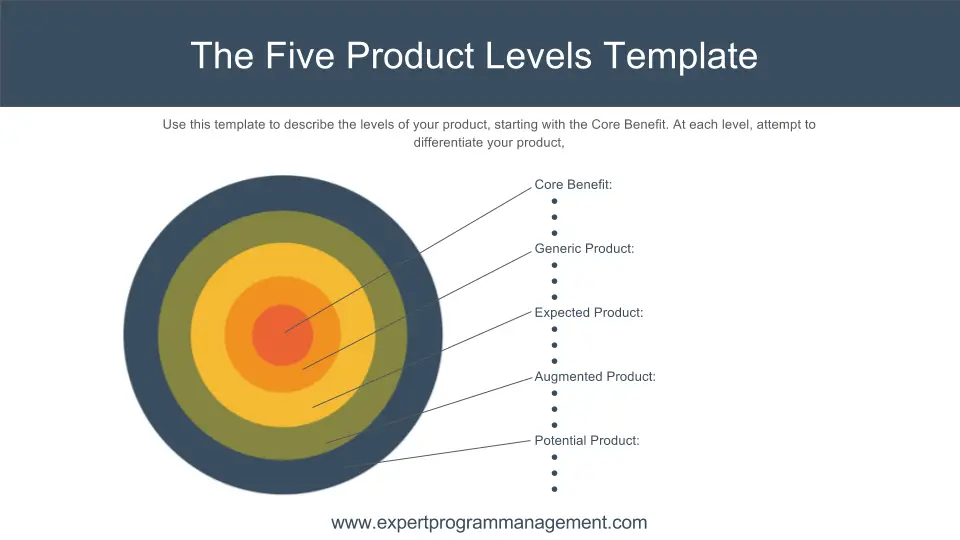
Summary
The Five Product Levels model provides a way to show the different levels of need that customers have for a product.
It can be useful in helping organizations understand their customers. From there, they can structure themselves to best serve those needs and wants. In this way, they can differentiate themselves from their competitors.

